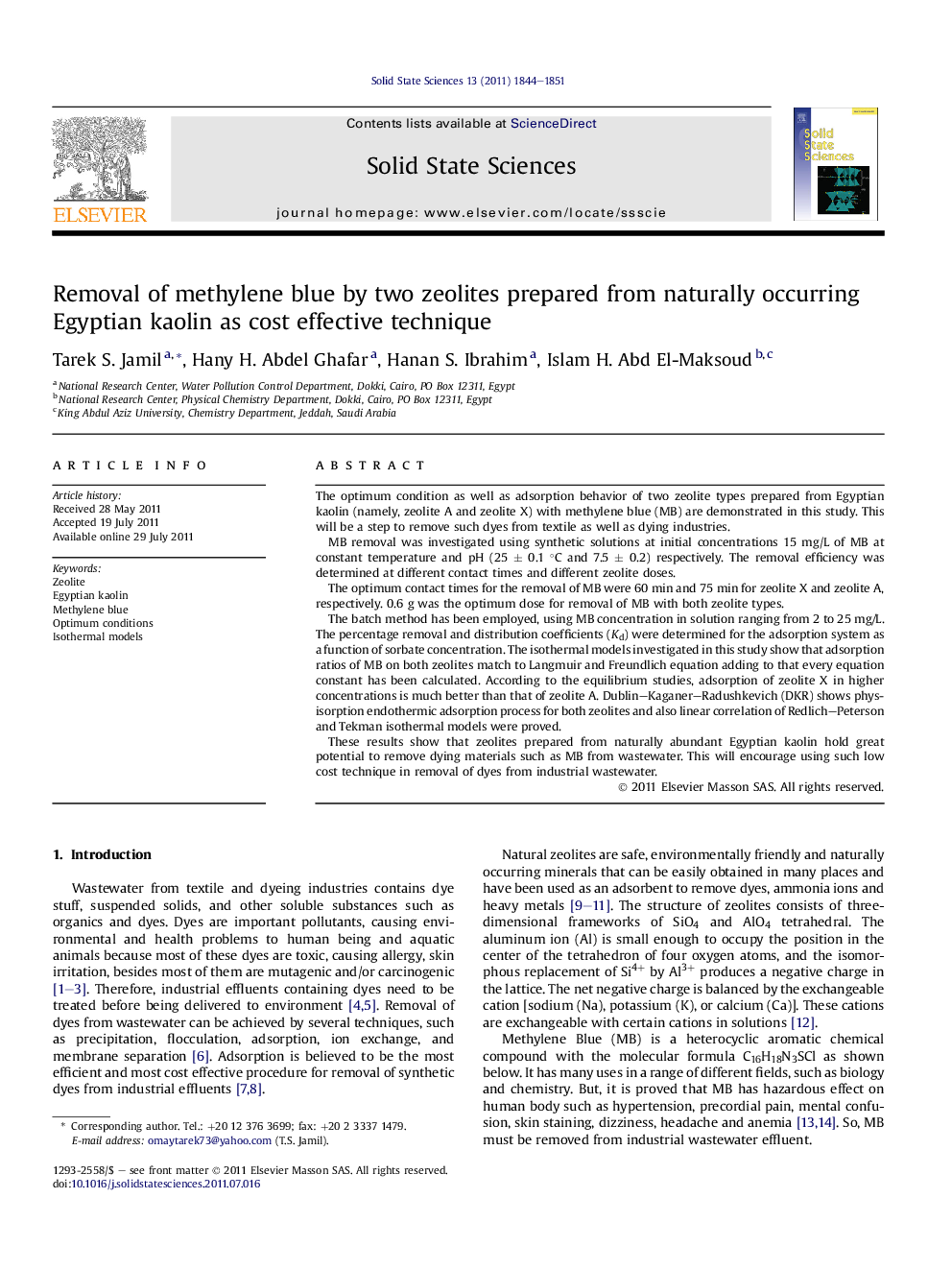| Article ID | Journal | Published Year | Pages | File Type |
|---|---|---|---|---|
| 1505377 | Solid State Sciences | 2011 | 8 Pages |
The optimum condition as well as adsorption behavior of two zeolite types prepared from Egyptian kaolin (namely, zeolite A and zeolite X) with methylene blue (MB) are demonstrated in this study. This will be a step to remove such dyes from textile as well as dying industries.MB removal was investigated using synthetic solutions at initial concentrations 15 mg/L of MB at constant temperature and pH (25 ± 0.1 °C and 7.5 ± 0.2) respectively. The removal efficiency was determined at different contact times and different zeolite doses.The optimum contact times for the removal of MB were 60 min and 75 min for zeolite X and zeolite A, respectively. 0.6 g was the optimum dose for removal of MB with both zeolite types.The batch method has been employed, using MB concentration in solution ranging from 2 to 25 mg/L. The percentage removal and distribution coefficients (Kd) were determined for the adsorption system as a function of sorbate concentration. The isothermal models investigated in this study show that adsorption ratios of MB on both zeolites match to Langmuir and Freundlich equation adding to that every equation constant has been calculated. According to the equilibrium studies, adsorption of zeolite X in higher concentrations is much better than that of zeolite A. Dublin–Kaganer–Radushkevich (DKR) shows physisorption endothermic adsorption process for both zeolites and also linear correlation of Redlich–Peterson and Tekman isothermal models were proved.These results show that zeolites prepared from naturally abundant Egyptian kaolin hold great potential to remove dying materials such as MB from wastewater. This will encourage using such low cost technique in removal of dyes from industrial wastewater.
Graphical abstractFigure optionsDownload full-size imageDownload as PowerPoint slideHighlights► Removal of MB dye with low cost locally prepared zeolites from Egyptian kaolin. ► Presentation of zeolites characterization. ► Adsorption mechanism was examined and isothermal models were performed.
